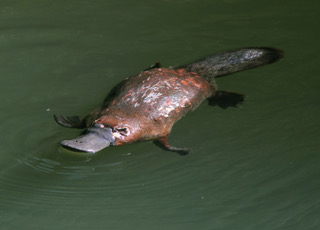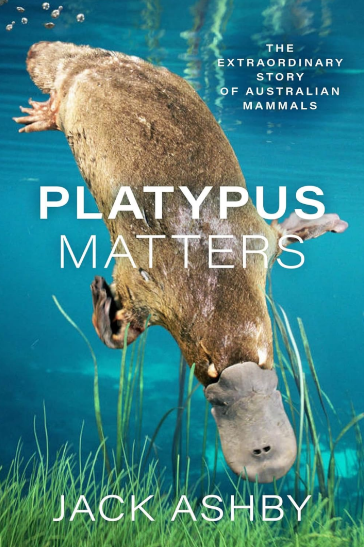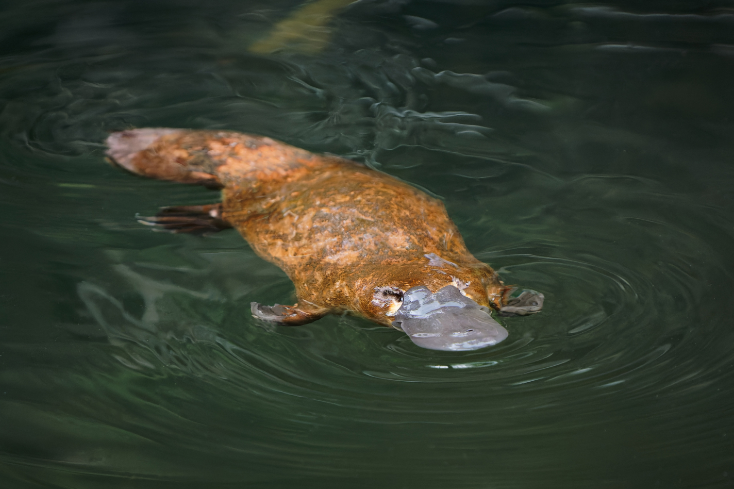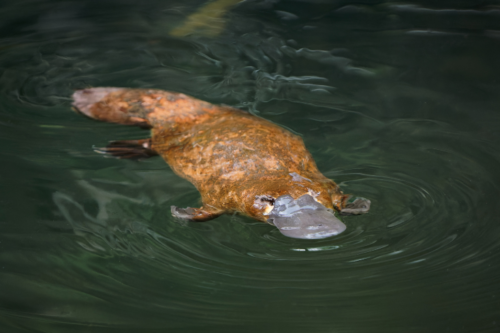
By Jill Lowe
The platypus is an amazing creature seemingly formed by a committee amalgamating elements from reptile (males with venom), a bird (by laying eggs) and a mammal. (in lactation.) It is one of the animals influenced by the boundary called the Wallace Line thus keeping the platypus in Australia.

The duck-billed platypus
Why only in Australia?
In fact there are two lines: the Wallace and Weber lines that are imaginary dividers used to mark the difference between species found in Australia and Papua New Guinea, and Southeast Asia. This is especially apparent when considering the difference in mammals between the two regions. The invisible barriers keep the two worlds apart, as most animals so do not cross these lines.
The transitional zones between Asia and Australia were first drawn by British naturalist Alfred Russel Wallace and by Max Carl Wilhelm Weber, a biogeographer and zoologist in the mid 1800’s. The lines were formed some 50 million years ago when tectonic plates separated to form a deep-water channel acting as a barrier keeping the flora and fauna of Australia separate from those of Asia.
Both are hypothetical lines drawn to separate biogeographical realms. Some call these lines “faunal boundaries.”
The more well-known Wallace Line is between Borneo and Sulawesi and between Bali and Lombok, whereas Weber, believed the boundary was farther east, coming much closer to the island of New Guinea and the continent of Australia.

The Wallace Line and the Weber Line
Both lines describe the same phenomenon that different species of animal do not cross. The Australian side of the Wallace line is characterized by the prevalence of marsupial species like kangaroos along with monotremes, such as the platypus. The Asian side is populated by placental mammals such as apes, elephants, monkeys and rhinoceroses, among others.
Prior to the explanation of the lines, the common thought for the separation of tigers and kangaroos and their evolution, was thought to be divine.

The duck-billed platypus is a monotreme, that is an egg-laying mammal, that suckles its young, is carnivorous, aquatic, warm blooded, and has webbed feet. The only other monotreme is the echidna also found in Australia, and Papua New Guinea. Around 14-24 inches long, platypuses (which is the correct plural form, not platypi) have thick fur.
Monotremes and Evolution
Charles Darwin is who we all cite when discussing evolution. The theory of evolution spelled out in his 1859 book On the Origin of Species was after he carefully studied the platypus when in Australia.
But another name, one of history’s greatest runner-ups was Alfred Russel Wallace. It was whilst he was immersed in Indonesia’s natural beauty, that he (independently from Darwin) came up with a theory of evolution by natural selection.
Wallace immediately penned a paper and sent it off to England where it was read aloud in 1858 at a fateful meeting of the London Linnean Society together with one of Darwin’s papers suggesting the same theory. Darwin, meanwhile, was so startled by Wallace‘s conclusions that he immediately accelerated work on his masterpiece On the Origin of Species. It was in print the following year.
The platypus is elusive in Australia and if sighted it is in the eastern side of the country. Many have only seen a platypus in a zoo. But they are so intriguing, beguiling and of great interest. Children’s books abound with stories of the platypus, and they are a popular stuffed animal. Because of scarce sightings, photographs of platypuses are equally scarce.

The platypus is not only elusive, it is borders on endangered, and was virtually extinct in areas of Australia.
But from the It’s a Wild life site we can find information on platypus conservation. Dr. Tahneal Hawke works as part of the Platypus Conservation Initiative (PCI), a group formed by the University of New South Wales. Everything that they do for the platypus is a big collaboration. Tahneal and the PCI work closely with Taronga Conservation Society, WWF Australia, Australian Conservation Foundation, New South Wales National Parks and Wildlife Services.

Tahneal with one of the platypuses. She is assessing the animal for inclusion in the project. Image credit: Richard Freeman
From Australian Geographic How to rebuild a Platypus population
In December 2023 it was reported that six months after the historic reintroduction of platypuses to Royal National Park south of Sydney, the iconic Australian animals are thriving in their new habitat.
Ten platypuses were released in May 2023, after being locally extinct for 50 years. Each of them carries an acoustic tag which pings listening receivers up and down the rivers of the Royal National Park… Visitors to the Royal are now regularly reporting platypus sightings.
More information on the platypus is found in these publications

A wealth of information on the platypus is available in the above book. Consider the Platypus: Evolution through Biology’s Most Baffling Beasts by Maggie Ryan Sandford focuses on the platypus, which has so many disparate features, from a duck’s bill to venomous spur to mammary patches, that scientists originally thought it was a hoax.
Find out more of the two platypuses at San Diego Zoo and the extraordinary coordination with the Taronga Park Zoo in Sydney, in this link to the podcast.
Amazing Wildlife : a San Diego Zoo Podcast
Platypus : A Duck billed Egg laying Mammal
Hosts Rick and Ebone reveal some interesting facts about this egg-laying mammal and detail the journey on how the San Diego Zoo became the only zoo outside Australia to house platypuses.

Platypus Matters: The Extraordinary Story of Australian Mammals
Think of a platypus: They lay eggs (that hatch into so-called platypups), produce milk without
nipples and venom without fangs, and can detect electricity. Conservation concerns are discussed.

From the mid 1900’s, we have Alfred Russel Wallace to thank for solving the mystery of why most animals do not cross his imaginary and invisible line.

The endearing portrait of the platypus delights and charms all, whether in Australia or from afar

Notes and Links:
Photo of Jill by Joe Mazza, Bravelux inc.
Photos copyright © 2024 Jill Lowe. All rights reserved
Images from Shutterstock license
Platypus facts stranger than fiction
It’s a Wild life
National Geographic
Australian Geographic
Instagram Sr Tahneal Hawke







